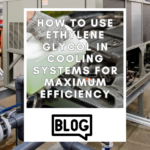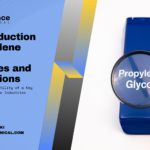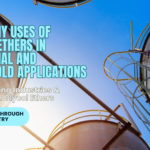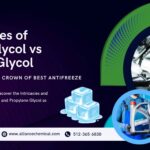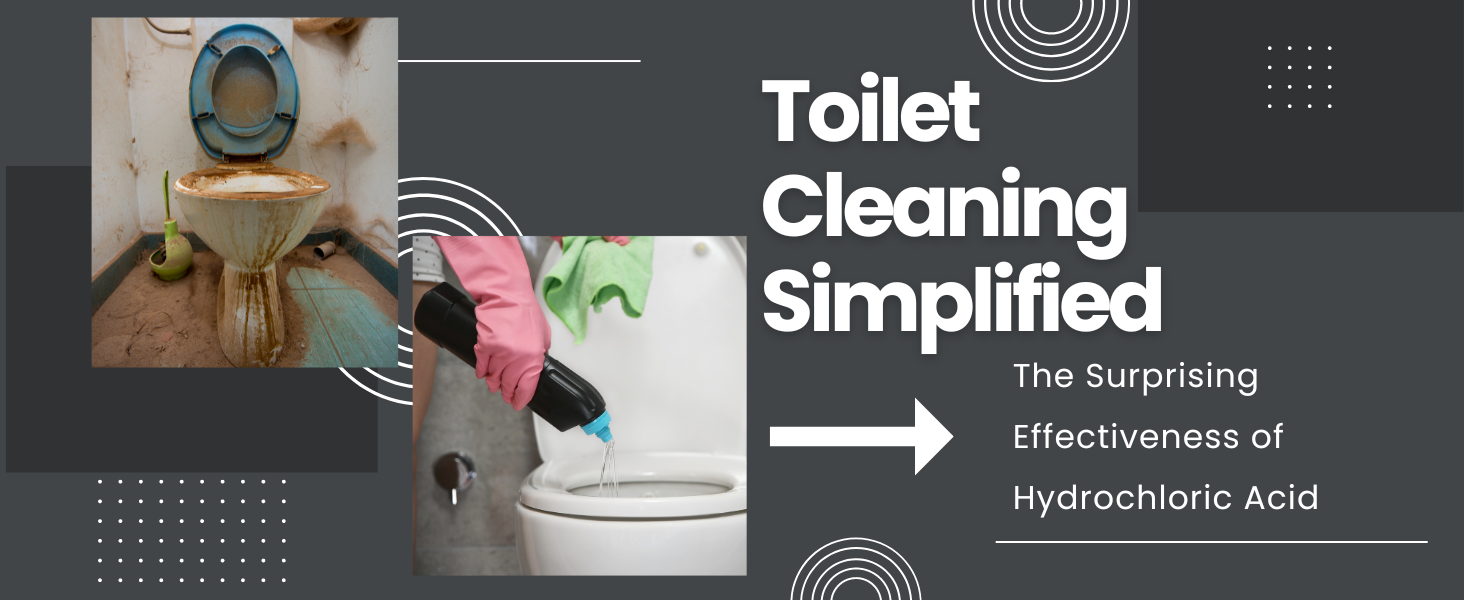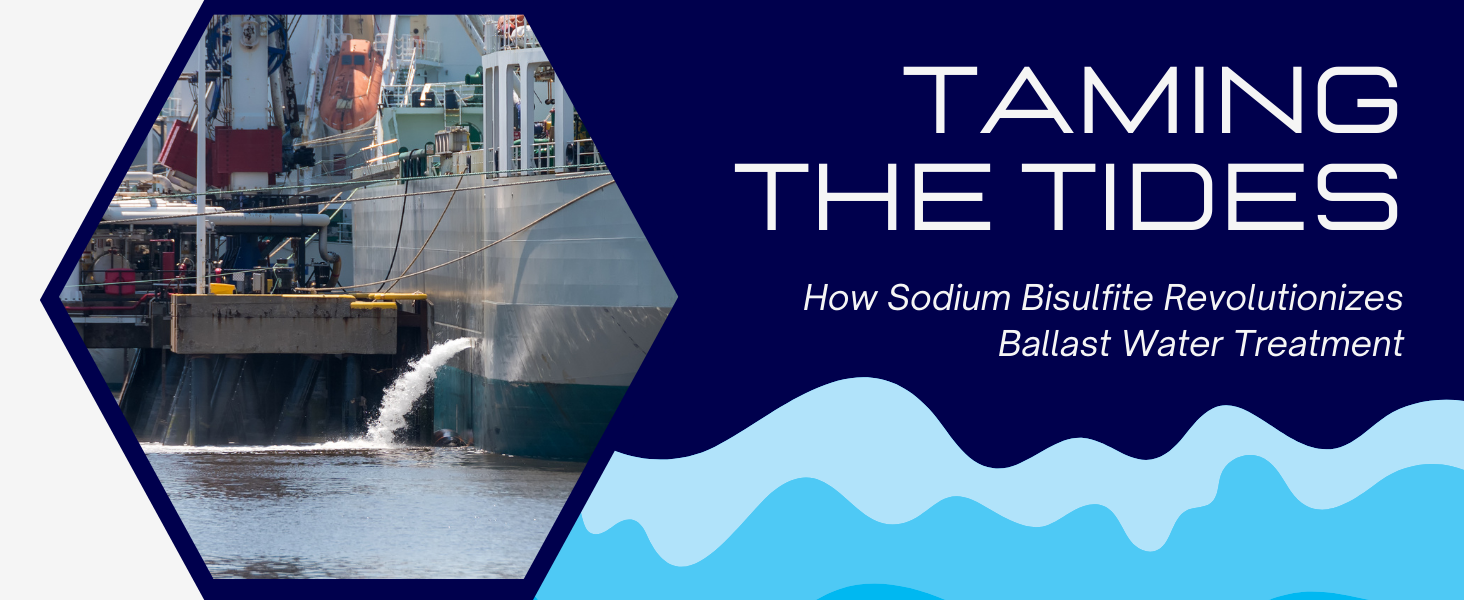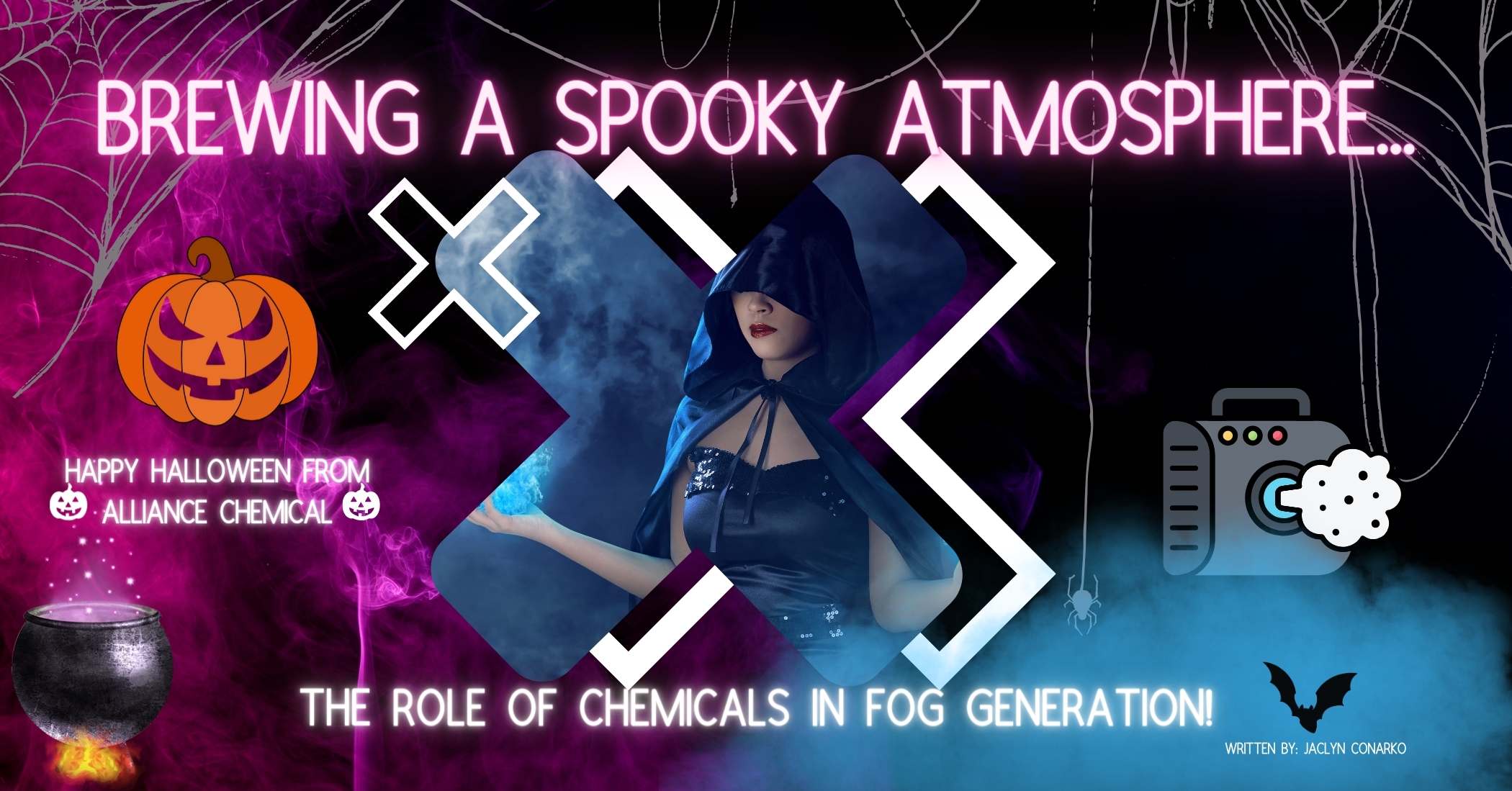
Brewing a Spooky Atmosphere: The DIY Recipe for a Spectral Fog Solution Using Propylene Glycol, Glycerin, + Distilled/Deionized Water
Halloween is synonymous with a mystic atmosphere, where the ethereal fog envelopes the surroundings, providing a perfect canvas for shadows and spooks to play their part. In creating this signature eerie ambiance, fog machines, utilizing the chemical wonders of Propylene Glycol and Glycerin, are responsible for the spectral vapors. Wooooo! *ghost sounds*
The Mystique Behind the Fog
Fog generation, especially in the context of creating a haunting atmosphere, relies heavily on producing a dense, lingering, and safe-to-inhale fog. This is where propylene glycol and glycerin make their dramatic entrance. Their chemical properties allow for the creation of fog that is not only realistic in appearance but also non-toxic, ensuring the safety and enjoyment of everyone who ventures into the mist.
The mechanics of fog production are simple yet fascinating. A fog machine heats a mixture of propylene glycol, glycerin, and water to a point where it vaporizes. This vapor is then expelled into the cooler air outside the machine, where it rapidly condenses into countless tiny droplets, forming a cloud that we see as fog. The composition of the fluid is critical; it determines the thickness, hang time, and the overall visual effect of the fog.
While fog machines are a popular choice for Halloween enthusiasts and haunt proprietors, the applications of these chemicals extend beyond the spooky season. Theatrical productions, firefighting training, and even climate control in greenhouses use the fog to create various desired effects and environments, showcasing the versatility and importance of chemical applications in creating atmospheric conditions.
Propylene Glycol: The Fog Enhancer
At the heart of many fog machine fluids is a compound known for its prowess in fog enhancement—propylene glycol. This colorless, viscous liquid is instrumental in producing dense, white fog that lingers and wafts through haunted attractions and stage productions alike, setting the scene for a truly immersive experience.
Propylene glycol’s lower vapor pressure compared to water allows it to produce a thick vapor at a lower temperature, which, when cooled by the surrounding air, forms the characteristic dense fog used in entertainment venues worldwide. It is the preferred choice for many because it is less toxic than its chemical cousin, ethylene glycol, and is even found in applications as varied as food processing and pharmaceuticals.
For those who are looking to purchase propylene glycol for their fog fluid, it’s essential to choose a product that is formulated specifically for this use to ensure safety and quality. Alliance Chemical’s USP-grade Propylene Glycol is a prime example of a high-quality option that can be used to create safe and effective fog fluids for a variety of applications.
Glycerin: The Smoky Specter Creator
Glycerin, a colorless and odorless liquid, is another vital component in the alchemy of fog-making. It is cherished for its ability to produce a thick, smoke-like fog, perfect for setting a spectral stage. Glycerin’s role in fog fluid is similar to that of propylene glycol, yet it possesses unique characteristics that make it indispensable in certain foggy scenarios.
One of the magical properties of glycerin is its high boiling point, which leads to the production of a fog that has a smokier appearance compared to that made with propylene glycol. This smoke-like effect is especially coveted in theatrical productions where a dramatic, heavy fog is necessary to evoke a sense of mystery and anticipation.
When heated in a fog machine, glycerin forms an aerosol that creates a dense and heavy fog. This fog tends to stay close to the ground, crawling and creeping in a manner reminiscent of classic horror films. Its ability to reflect light powerfully means that glycerin-based fogs are excellent for laser and light shows, as they enhance the beams and add a visual weight to the light.
Another benefit of glycerin is its humectant nature, which means it helps to moisturize the air. This feature is particularly beneficial in arid climates where dry air can quickly dissipate the fog. With glycerin, the fog retains its eerie embrace a bit longer, making it a favorite for outdoor mazes, graveyard scenes, and night-time spookfests.
Because glycerin is non-toxic and safe for use around people and pets, it has become a staple in household and commercial fog machines. Whether you’re looking to add an uncanny chill to a Halloween bash or conjure the illusion of a smoldering cauldron, glycerin is your go-to for crafting that perfect smoky specter. For those interested in the practical applications of glycerin or looking to purchase high-quality glycerin for fog production, Alliance Chemical offers a selection that can meet your needs.
Conjuring the Perfect Fog: A Blend of Science and Spook
The enigmatic dance of fog as it curls and weaves through the air on a chilly Halloween night is as much about scientific precision as it is about the art of creating the perfect spooky atmosphere. Crafting the perfect fog involves a delicate balance of ingredients, mixed in just the right proportions, to achieve that mysterious, lingering cloud that is safe to breathe and disappears without a trace.
High-quality ingredients are crucial to this process. The use of specially formulated compounds like propylene glycol and glycerin, combined with the purest water, ensures that the resulting fog is dense, durable, and non-toxic. For those looking for the highest standard in their fog production, products like Alliance Chemical’s deionized water provide a superior base for creating a consistent and safe fog, free of impurities that could otherwise affect the performance and safety of the fog fluid.
The Science Behind the Spook
Behind every ghostly mist and every shroud of Halloween fog lies a foundation of science. The spookiness we see and feel is, in fact, a complex interplay of physics and chemistry. The fog that envelops a haunted house or drifts across a dimly lit stage is created by fog machines, which operate on simple yet fascinating scientific principles.
Fog machines typically work by heating a mixture of water and glycol-based fluids to create a vapor. When this vapor is expelled into the cooler air outside the machine, it rapidly cools and condenses, forming the tiny droplets that appear as fog. The type of glycol used can affect the fog’s properties: propylene glycol can produce a thinner mist, while glycerin tends to create a denser, more opaque fog.
The thickness and hang time of the fog are critical for achieving the desired spooky effect. A thicker fog that lingers will obscure vision more, creating a sense of mystery and fear as shapes and shadows appear and disappear within it. The use of deionized water, free from minerals and impurities, ensures that the fog is as clean and safe as possible, preventing any unwanted residue on surfaces or breathing hazards for performers and guests.
Temperature and humidity also play significant roles in how the fog behaves. Cooler air can sustain the fog longer, while high humidity can make the fog denser. Understanding these environmental factors allows haunters and stage technicians to manipulate conditions to their advantage, ensuring the fog adds to the ambiance without becoming a hindrance.
At the end of the day, the science of fog creation is all about control and manipulation of the environment to achieve an effect that can chill the spine. Whether it’s for a Halloween event or a theatrical production, the principles remain the same: create a safe, dense fog that sets the tone for an unforgettable experience.
Safety First: Ensuring a Haunt without Harm
The thrill of a haunting experience must never come at the cost of safety. When creating fog effects, it’s essential to consider the well-being of both the participants and the environment. Non-toxic fog fluids are a must, as they will be inhaled by actors and guests alike. It’s also important to ensure that the fog does not leave a slippery residue, which could lead to falls and injuries. Adequate ventilation is key in indoor settings to keep the air clear of any potential irritants. Furthermore, fog machines themselves should be operated according to manufacturer guidelines to prevent overheating or electrical hazards.
Crafting Your Own Fog Fluid: A Bewitching Brew
For those who delve into the realms of theater or the haunting arts, creating your own fog fluid can be a rewarding venture. With precise measurements and careful mixing, you can concoct a gallon of fog juice designed to billow and creep, setting the perfect scene for your spooky endeavors.
Here’s a step-by-step guide to creating a basic medium-density fog fluid:
- Gather Your Ingredients: You will need distilled water, propylene glycol, and glycerin. The purity of these ingredients is important to ensure the safety and quality of your fog.
- Measure the Distilled Water: Start with 3.2 quarts (3 liters) of distilled water. This will act as the base of your fog fluid, ensuring that it is free of impurities that could clog your fog machine.
- Add Propylene Glycol: Measure out 0.8 quarts (757 milliliters) of propylene glycol. This compound is responsible for creating a thick vapor when heated and is safe for use in a fog machine.
- Include Glycerin for Thickness: For a denser fog, add up to 0.4 quarts (378 milliliters) of glycerin. This ingredient increases the viscosity of the fluid, which produces a heavier fog that lingers longer in the air.
- Mix the Fluid: In a large container, combine the distilled water with propylene glycol and glycerin. Stir the mixture gently but thoroughly to ensure that the ingredients are fully blended.
- Test the Mixture: Before using the fluid in your fog machine, test a small amount to ensure it produces the desired effect and does not cause any issues with your equipment.
- Store Properly: Store the remaining fog fluid in a cool, dark place, tightly sealed to prevent any contamination or evaporation.
When crafting your own fog fluid, it’s crucial to consider the type of fog machine you have, as different machines may require different fluid consistencies. Always refer to the manufacturer’s guidelines to prevent any potential damage to your equipment.
Creating your own fog juice allows for customization and adjustment. Whether you need a thin mist or a thick fog, you can alter the ratios of glycol and glycerin. Just remember, safety is paramount. Use only food-grade ingredients, and avoid any additives that could be harmful when vaporized and inhaled.
With this DIY approach, not only do you have control over the density and hang time of your fog, but you also gain a deeper understanding of the science behind the spectacle. So go forth, conjure your brew, and fill the air with the mystique of your very own foggy creation.
In Conclusion: Weaving a Web of Enchanting Fog with Chemistry
As our exploration of fog’s mystical allure comes to a close, we recognize the intricate blend of science and creativity at play. From the ethereal wisps that glide over gravestones to the dense clouds that cloak diabolical dungeons, the mastery of fog fluid crafting is a testament to the harmonious dance between chemistry and theatrical artistry.
With every measured pour of propylene glycol, with every drop of glycerin, and with each gallon of distilled water, we become alchemists of atmosphere, creators of worlds unseen and tales untold. The fog we create is more than a visual effect; it’s a medium through which stories come to life, where the boundaries between the real and the imagined blur into a realm of wonder and intrigue.
Whether you are a seasoned professional or an enthusiastic beginner, the journey into fog fluid creation is one of continuous learning and experimentation. The recipes we’ve shared serve as a starting point, a foundation upon which you can build your own unique atmospheric effects that captivate and mesmerize.
So as you venture forth, mixing and molding the elements to your will, remember that the true magic of fog lies in the experiences it shapes. It’s a vessel for emotions, a canvas for light, and a gateway to the extraordinary. Embrace the science, respect the craft, and may your haunts be ever shrouded in the safe, enchanting embrace of your homemade fog.
-
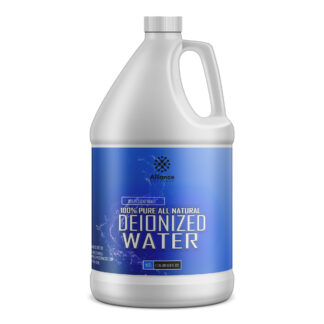 Deionized Water$28.00 – $2,250.00
Deionized Water$28.00 – $2,250.00 -
 Propylene Glycol USP Grade$28.00 – $6,400.00
Propylene Glycol USP Grade$28.00 – $6,400.00 -
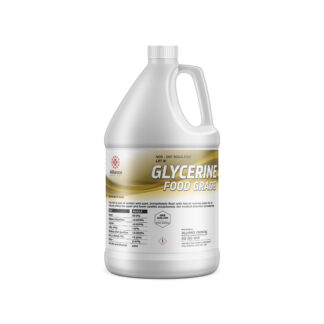 Glycerin USP Grade$29.00 – $4,700.00
Glycerin USP Grade$29.00 – $4,700.00




